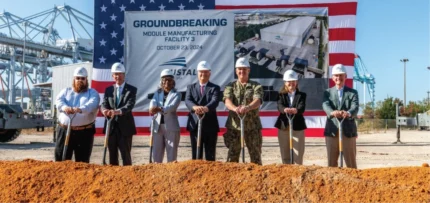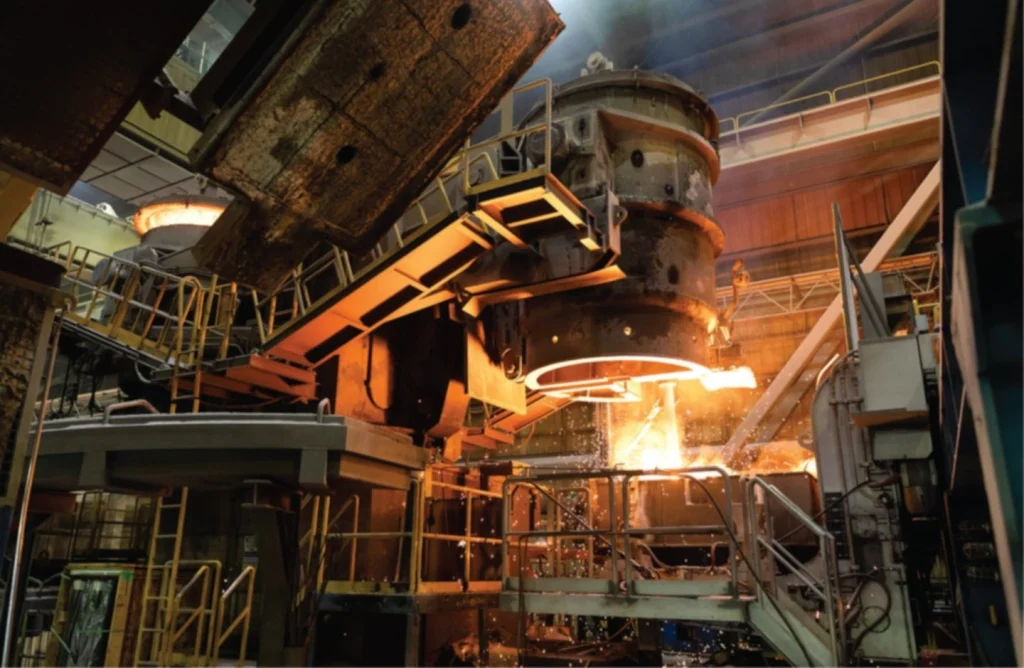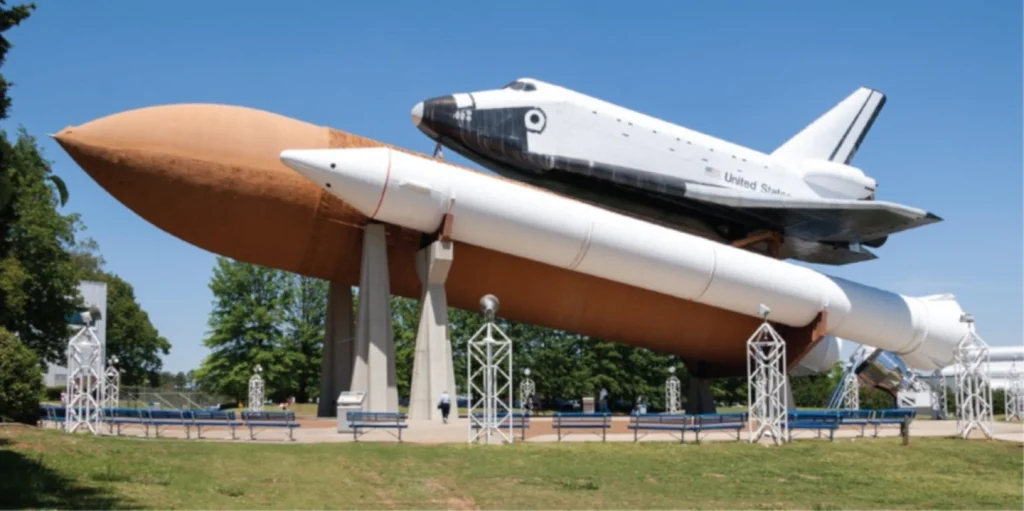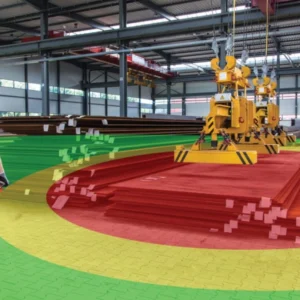
Alabama Governor Kay Ivey recently rolled out Catalyst, a bold new economic development strategy designed to propel the state’s growth and competitiveness through the next decade and beyond. This new plan marks a significant evolution from the state’s previous framework, Accelerate Alabama, which helped the state achieve remarkable success over the past decade. Since its inception in 2012, Accelerate Alabama has driven $67bn in capital investment and led to nearly 170,000 job commitments. Yet, as Governor Ivey recognised, in today’s fast-paced, technology-driven economy, a fresh approach is needed to ensure that Alabama not only keeps pace with global trends but also takes the lead in shaping the future.
Catalyst builds on the foundation established by Accelerate Alabama, but its scope is broader and more forward-thinking. The global economy is changing rapidly, with new technologies transforming industries at an unprecedented rate. Automation, artificial intelligence, green technologies, and advanced manufacturing are all reshaping the world. Governor Ivey made it clear that Alabama must be proactive in positioning itself to remain a competitive and thriving economy in the face of these changes. “We must have an economic development strategy that prepares Alabama for the 2030s,” she said, adding that the state must adapt to the revolution happening across industries to ensure it continues to attract projects that create quality jobs and contribute to the vitality of communities.
At the core of Catalyst is a vision to diversify and future-proof Alabama’s economy by expanding beyond the traditional focus on attracting large-scale manufacturing projects. While the state will continue to pursue major industrial investments, Governor Ivey and her team have recognised the need to broaden their economic development approach. Catalyst takes a multifaceted approach that emphasises entrepreneurship, innovation, workforce development, and regional growth. The plan aims to create an economy that isn’t solely reliant on one industry or sector, but rather one that is flexible and adaptable to the changes of tomorrow’s economy. The state is looking to cultivate a robust ecosystem that supports both large corporations and small start-ups, as well as foster homegrown talent to drive innovation and growth.
One of the key pillars of the Catalyst plan is its focus on “quality placemaking”. This concept extends beyond simple urban planning to encompass creating environments that are not only attractive for businesses but are also vibrant and liveable for residents. Governor Ivey pointed out that, as the world becomes more mobile, people are increasingly making decisions about where they live based on factors like lifestyle, community engagement and recreational opportunities. Alabama has an abundance of natural beauty and outdoor recreation, and the state intends to capitalise on these assets to enhance its appeal as a destination for both talent and investment. By creating thriving, dynamic communities with access to outdoor amenities and modern infrastructure, Alabama hopes to attract young professionals, entrepreneurs, and companies that seek to establish themselves in places with a high quality of life.
In addition to placemaking, Catalyst also outlines a strategic focus on eight critical industry sectors that are expected to drive Alabama’s economic future. These include: mobility (which connects the automotive and aerospace sectors), defence, advanced materials, chemical manufacturing, forestry and wood products, agriculture and food, biosciences, and logistics. Each of these industries is considered a highgrowth area, with strong potential to drive not only job creation but also innovation and technological development. By honing in on these sectors, Alabama aims to create a diverse economic landscape that can weather shifts in the global market while fostering new opportunities for businesses and workers.
One of the key advantages that Alabama has is its long-standing leadership in manufacturing, particularly in the automotive, aerospace and steel sectors. As the state moves forward with the Catalyst plan, it will leverage these existing strengths while investing in new technologies and industries. The state’s deep expertise in advanced manufacturing provides a solid foundation for growing sectors like mobility and defence, where high-tech manufacturing and innovation are driving growth.
Equally important is the human capital component of the plan. Governor Ivey has emphasised the need for education and workforce development to remain a top priority. The plan calls for more investment in training and education programmes to ensure that Alabama’s workers have the skills needed to meet the demands of the industries of tomorrow. Catalyst seeks to close the skills gap by strengthening ties between Alabama’s educational institutions and its industries, ensuring that students and workers alike are equipped with the right skills for the jobs of the future.

To achieve these ambitious goals, Catalyst places a premium on collaboration. The plan highlights the importance of fostering partnerships among state and local governments, educational institutions, and private sector businesses. Alabama’s success will depend on creating synergies across different sectors to pool resources, share expertise, and implement best practices. Governor Ivey has long championed the idea that Alabama’s growth will be driven by collaborative efforts, and Catalyst seeks to bring public and private stakeholders together in a unified effort to strengthen the state’s economic ecosystem.
One of the most promising initiatives born out of Catalyst is the Alabama Growth Alliance, a public-private partnership that will help coordinate the state’s economic development efforts. This initiative, launched with the assistance of McKinsey & Company, will bring together the state’s leadership, industry experts, and local stakeholders to identify and seize new economic opportunities. Through the Alabama Growth Alliance, the state hopes to improve the efficiency and effectiveness of its economic development efforts, ensuring that resources are allocated where they will have the greatest impact. By aligning the goals of government, business and educational institutions, the alliance is designed to increase Alabama’s competitiveness and make the state more attractive to investment.
The success of the Catalyst strategy is already being reflected in several major investments in Alabama. One of the biggest success stories comes from the Tuscaloosa County Economic Development Authority (TCEDA), which recently announced that Nucor Steel Tuscaloosa will invest $280m to expand its operations at the local rolling mill. This investment will enable Nucor to introduce new product lines and enhance its competitive position in the global steel industry. The expansion will also create additional jobs and secure the long-term future of the facility, which currently employs over 400 workers. Governor Ivey praised the investment as a win not just for Tuscaloosa but for Alabama as a whole, saying it underscores the state’s ongoing efforts to strengthen its manufacturing base.

Another example of Alabama’s economic transformation is the expansion of Austal USA’s shipbuilding facility in Mobile. Austal has invested more than $750m in its Mobile facility, which includes the construction of a new submarine module manufacturing plant. This new facility will be operational by 2026 and will support the US Navy’s Columbia-class and Virginia-class submarine programmes. The expansion will create over 2,000 new jobs in the region and further solidify Mobile as a key player in the US defence sector. Governor Ivey lauded the project as a testament to Alabama’s growing prominence in defence contracting and its critical role in supporting the nation’s military capabilities.
At the same time, Alabama is also investing in smaller, high-impact projects aimed at developing a skilled workforce for the future. One such initiative is the opening of DeSHAZO’s National Training Center in Bessemer, Alabama. The facility will focus on training overhead crane technicians, a key role in the industrial sector. By providing hands-on training and real-world experience, DeSHAZO aims to help fill a critical skills gap in the workforce. The training centre will also support the company’s growing network of service technicians, which spans the US and several international markets. This emphasis on workforce development is a key part of the Catalyst plan, which recognises that a well-trained workforce is crucial for sustaining Alabama’s economic growth.
These projects, both large and small, reflect the diverse range of efforts underway to implement the Catalyst plan. From large-scale industrial investments to workforce training and placemaking, Alabama is taking bold steps to position itself for success in the future. Governor Ivey’s vision for the state is clear: Alabama must diversify its economy, invest in innovation, and build the infrastructure needed to support tomorrow’s industries. Catalyst is designed to do just that by focusing on human capital, technology and collaboration across sectors.
In summary, the Catalyst economic development plan represents a transformative approach to shaping Alabama’s future. By focusing on diverse industries, fostering innovation, and creating a skilled workforce, the state is laying the foundation for longterm economic prosperity. Governor Ivey’s forward-thinking leadership, combined with a commitment to collaboration and investment, will ensure that Alabama remains competitive and vibrant for years to come. As Catalyst continues to unfold, the state is poised to meet the challenges of a rapidly evolving global economy while securing its place as a leader in the new economy of the future.






